As the demand for sustainable, eco-friendly materials continues to rise, while durability and efficiency remain essential, understanding the differences between natural fiber and synthetic fiber has become crucial. This article from SIAM Brothers Vietnam will help you analyze their strengths and weaknesses, real-life applications, and provide guidance on selecting the most suitable fiber for manufacturing, farming, and industrial use.
1. What Are Natural Fibers and Synthetic Fibers?
1.1 Natural Fiber – Eco-Friendly Materials from Nature
Natural fiber is obtained directly from plants or animals without undergoing chemical synthesis. It is the ideal choice for those who value sustainability and biodegradability.
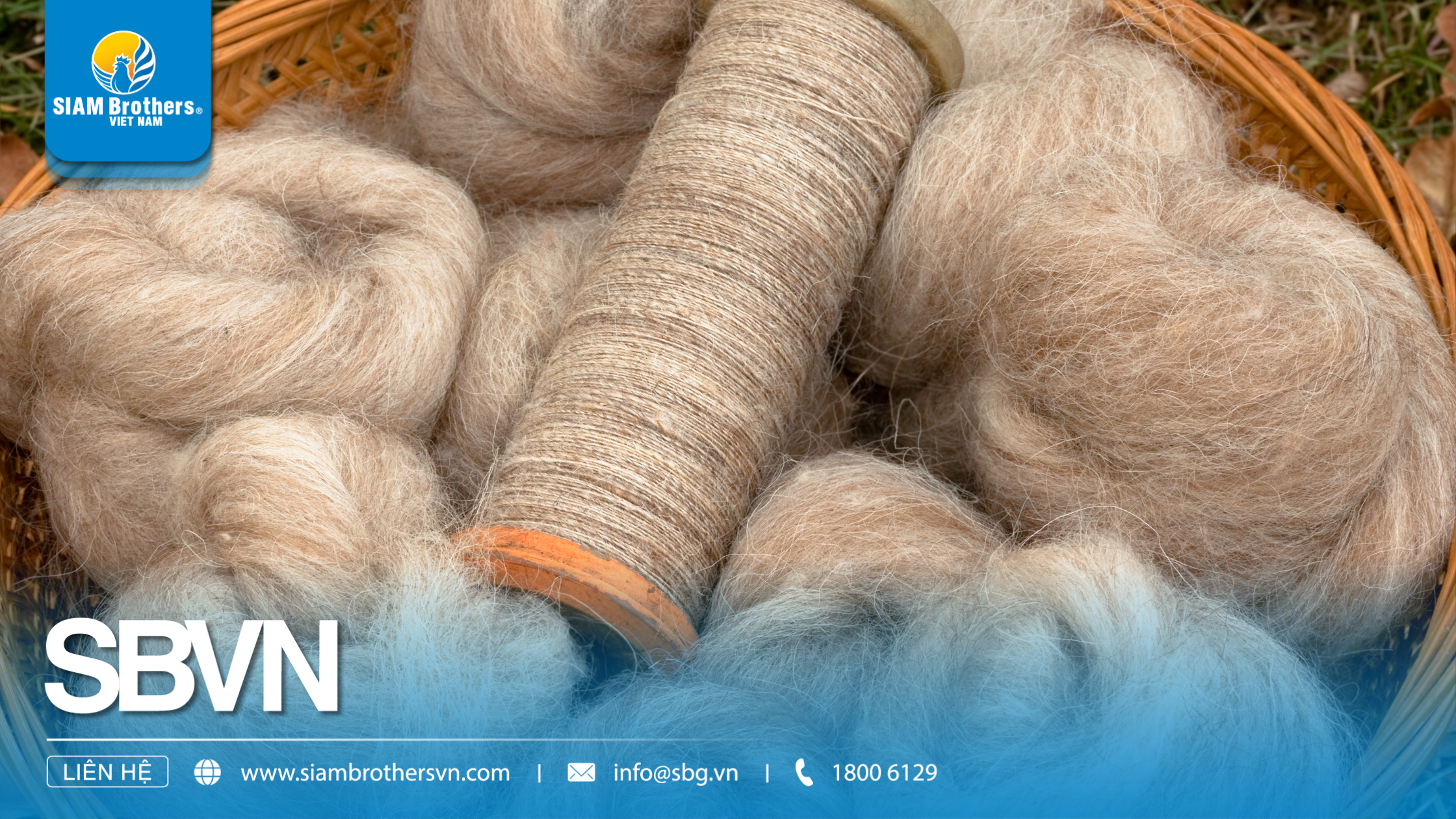
Key characteristics of natural fiber:
- Plant-based sources: cotton, jute, coir, flax, hemp, etc.
- Animal-based sources: silk, wool, sheep fleece, etc.
Outstanding advantages:
- Environmentally friendly and naturally biodegradable
- Excellent moisture absorption, gentle on skin, less irritating
- Rustic and authentic look – aligned with today’s green product trends
Limitations:
- Lower durability compared to synthetic fiber
- Prone to rotting when frequently exposed to water or humidity
- Higher cost in some cases due to complex production processes
Unlike natural fiber, synthetic fiber is produced through the polymerization of chemical compounds, mainly derived from petroleum.
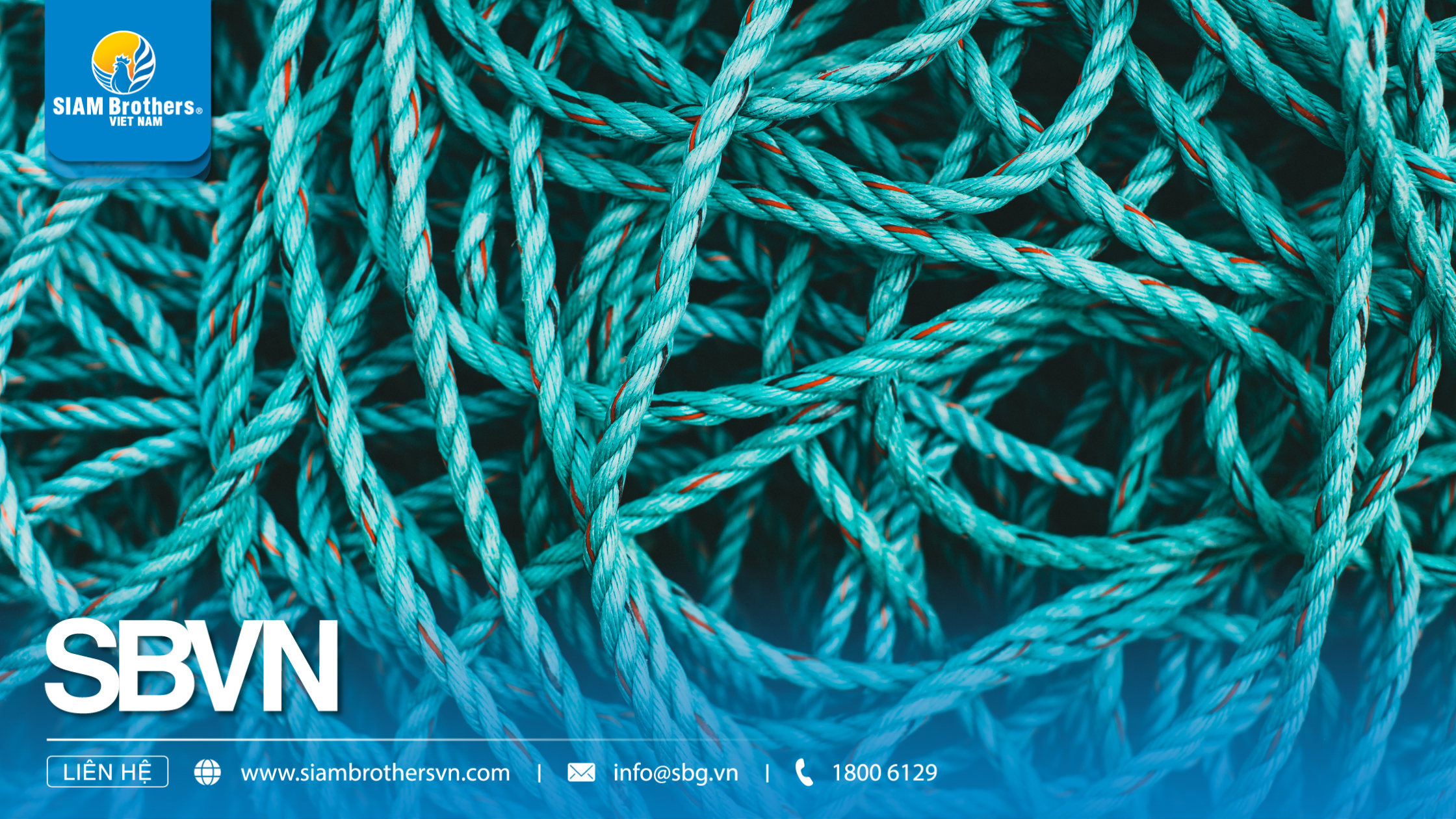
Key characteristics of synthetic fiber:
Origin: artificial polymers such as Polypropylene (PP), Polyethylene (PE), Nylon, etc.
Major advantages:
- High durability, water resistance, and excellent resistance to rotting
- Easy mass production, cost-effective for large-scale industries
Drawbacks:
- Non-biodegradable – poses environmental challenges if not properly managed
- Potential health risks with prolonged exposure to high-temperature environments
2. Detailed Comparison Table: Natural Fiber vs Synthetic Fiber
| Criteria |
Natural Fiber |
Synthetic Fiber |
| Origin |
- Extracted from plants (cotton, jute, coir, flax, etc.) or animals (silk, wool, sheep fleece).
- No chemical synthesis required.
|
- Industrially manufactured from polymers such as PP, PE, Nylon.
- Quality and production process are easy to control.
|
| Eco-friendliness |
- Naturally biodegradable.
- Minimal environmental pollution.
|
- Suitable for organic farming models. - Non-biodegradable, can persist in the environment.
- Some types can be recycled if properly treated.
|
| Strength & Durability |
- Moderate tensile strength.
- Easily affected by water, humidity, and mold.
|
- High durability and strong tensile strength.
- Stable in harsh environments (sea, sunlight, heavy rain).
|
| Water & Weather Resistance |
- Absorbs water, prone to rotting if exposed outdoors for long periods.
- Limited use in fisheries.
|
- Waterproof, buoyant.
- Resistant to UV rays, seawater, and high humidity.
|
| Cost & Economic Efficiency |
- Generally higher cost due to dependence on natural raw materials.
- Preferred by eco-conscious customers.
|
- Lower cost with large-scale production.
- Optimized for businesses seeking long-term savings.
|
| Practical Applications |
- Tree-tying ropes, packaging ropes, handicraft ropes.
- Favored in clean agriculture and eco-friendly products.
|
- Mooring ropes, anchor ropes, aquaculture ropes, crop-support ropes.
- Core product line of SIAM Brothers Vietnam.
|
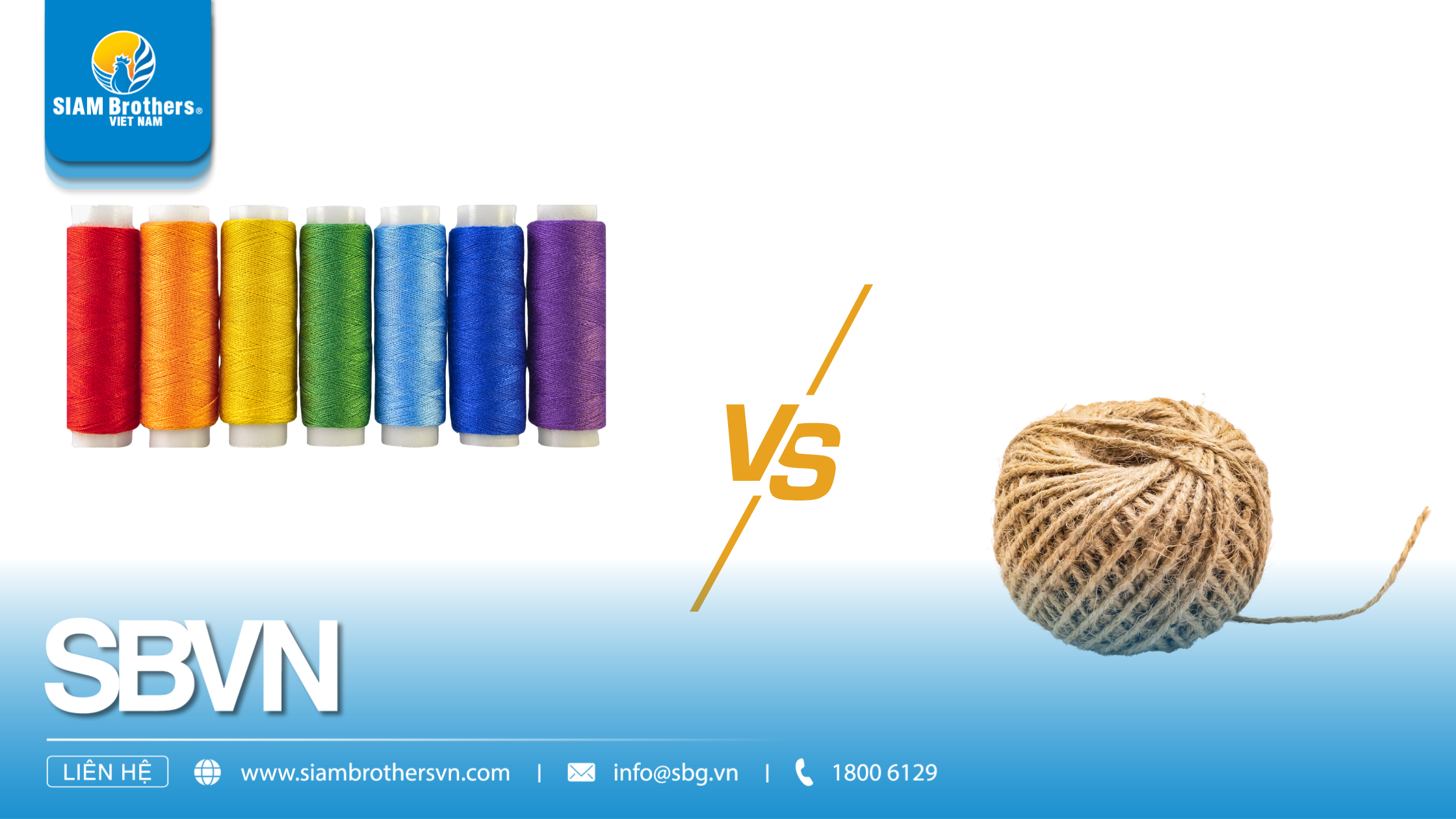
3. Practical Applications in the Rope and Agriculture Industry
3.1 Applications of Natural Fiber in Rope and Agriculture
Natural fiber ropes are often selected for activities requiring biodegradability, eco-friendliness, or short-term use.
Tree-tying and climbing ropes
- Ideal for organic farming systems.
- Naturally decomposes after harvest.
- Leaves no harmful residue in the soil.
Agricultural packaging ropes
- Suitable for products targeting export markets that demand green packaging.
- Enhances the image and value of clean agricultural goods.
Handicraft and decorative ropes
- Popular in handmade items such as baskets, hangers, décor.
- Brings a rustic, natural, and authentic feel.
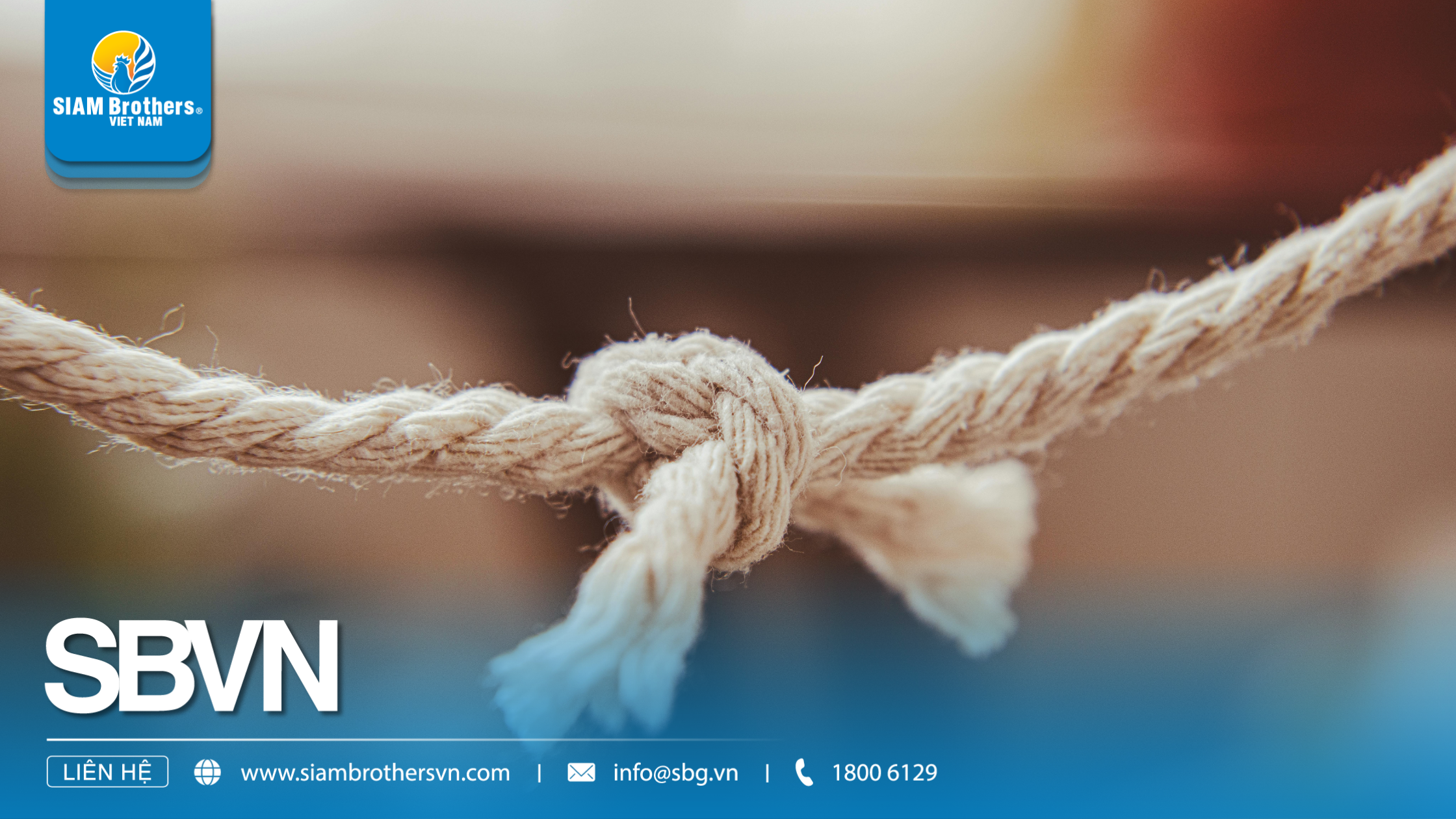
3.2 Applications of Synthetic Fiber in Rope Manufacturing at SIAM Brothers Vietnam
With outstanding durability, water resistance, and the ability to withstand harsh environments, synthetic fibers (such as PP, PE) are the primary materials for many of SIAM Brothers Vietnam’s industrial rope products.
Aquaculture ropes
- Used for securing fish cages, anchoring boats, and fastening HDPE buoys.
- Advantages: non-rotting, buoyant, resistant to seawater and UV exposure.
Large-scale crop support ropes
- Suitable for bean trellises, melon trellises, greenhouse farming.
- Non-stretching, waterproof, ensuring long-term durability across seasons.
Cargo securing and agricultural transport ropes
- PP and PE ropes with high tensile strength stabilize loads during long-distance transportation.
- More resistant to tearing and stretching than natural fiber ropes.
Multi-purpose ropes for industry and construction
Suitable for projects requiring heavy-duty ropes or extended outdoor use.
4. Frequently Asked Questions About Natural Fiber and Synthetic Fiber
4.1 Is natural fiber durable enough for rope making?
- Compared to synthetic fiber, natural fiber ropes have lower durability and can rot when exposed to water or intense sunlight for long periods.
- However, in dry conditions or for short-term purposes (such as tying plants), natural fiber ropes are perfectly suitable and effective.
4.2 Do synthetic fibers harm the environment?
- Synthetic fibers (such as Polypropylene – PP and Polyethylene – PE) are not biodegradable like natural fiber.
- That said, many companies – including SIAM Brothers Vietnam – have optimized production processes and promote reuse to minimize plastic waste across the supply chain.
4.3 Which fiber type is better for aquaculture?
- In water-intensive environments, synthetic fiber has significant advantages: non-rotting, waterproof, and highly durable.
- Natural fiber ropes are not suitable for aquaculture since they quickly degrade and lose strength when exposed to moisture for extended periods.
4.4 Should natural fiber and synthetic fiber be combined in one production model?
The answer is yes, depending on the application:
- Use natural fiber for short-term tasks, biodegradable solutions, or eco-focused applications.
- Use synthetic fiber in areas requiring durability, abrasion resistance, or constant water exposure.
4.5 Where to buy reliable natural fiber ropes or synthetic fiber ropes?
- SIAM Brothers Vietnam is a leading manufacturer and distributor of high-quality ropes, offering a wide range of materials – from natural fiber to advanced synthetic fiber.
- All products are guaranteed to meet strict safety, sustainability, and quality control standards before reaching the market.
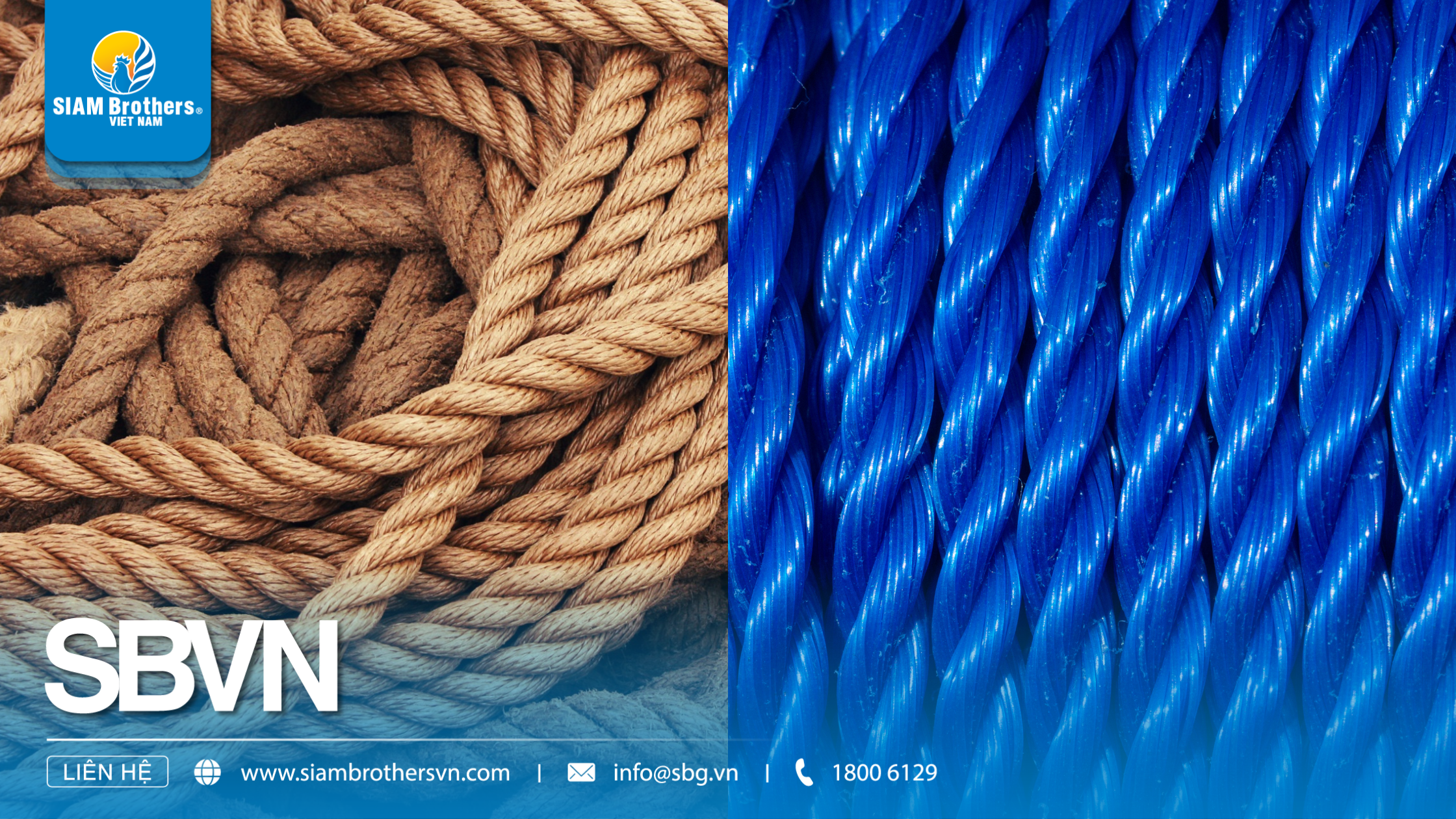
Natural fiber delivers eco-friendly and sustainable value, while synthetic fiber excels in strength and performance under harsh environments. Each type plays a crucial role depending on specific needs.
To maximize efficiency in rope manufacturing and agriculture, businesses must carefully consider their objectives and real-world conditions.
Contact SIAM Brothers Vietnam today for expert consultation and to choose the most suitable fiber for your production model!
Source: SIAM Brothers Vietnam
Contact us:
Address: 5th floor, VRG Building, 177 Hai Ba Trung Street., Vo Thi Sau Ward, District. 12, Ho Chi Minh City, Vietnam
Tel: (+84) 28 38 912 889
Hotline: 1800 6129
Facebook: www.facebook.com/siambrothersvn
Email: info@sbg.vn
YouTube: youtube.com/@siambrothersvietnam1728
X: x.com/sbvnjsc
OA Zalo: zalo.me/1402339229697925373
App SBVN ID:






